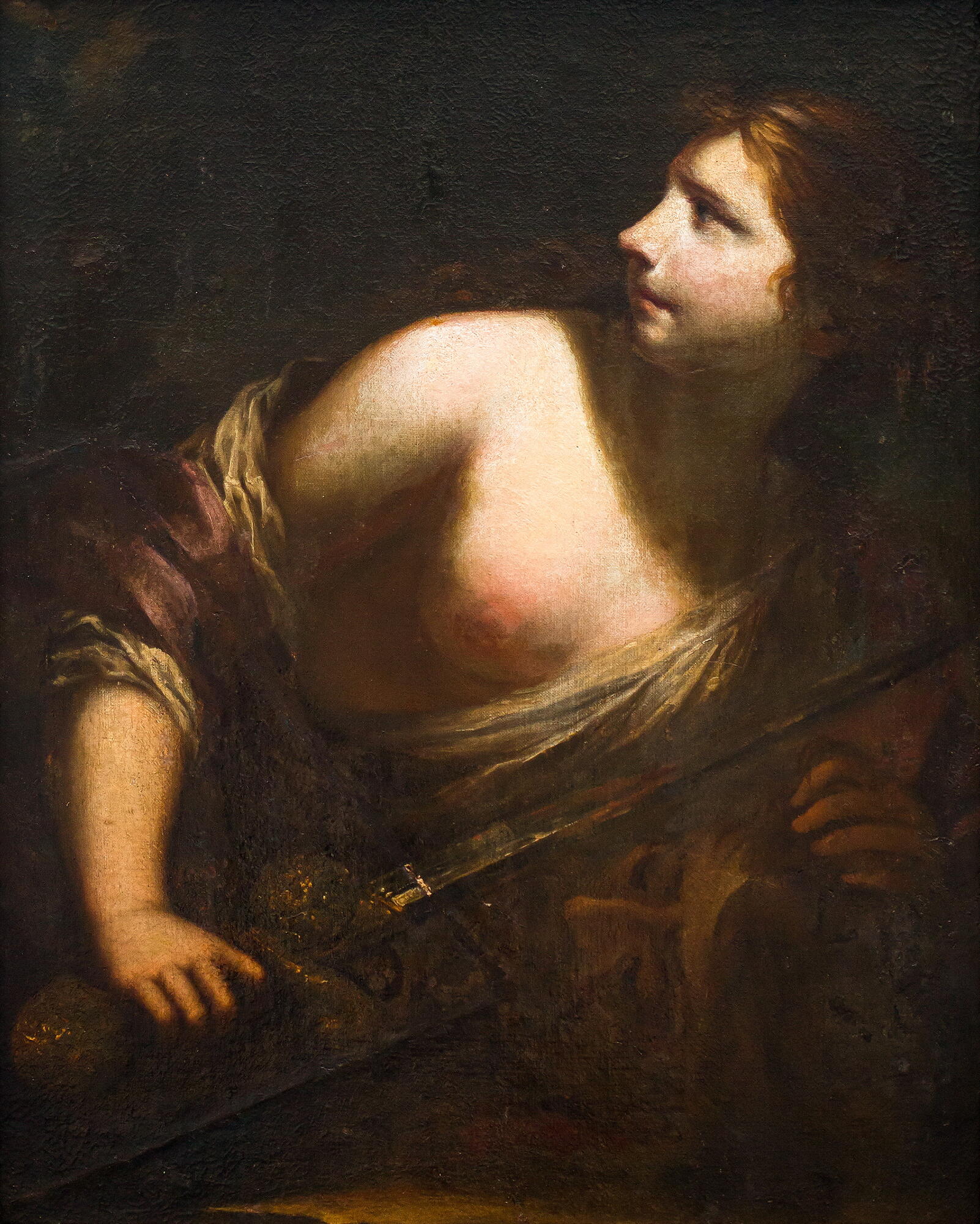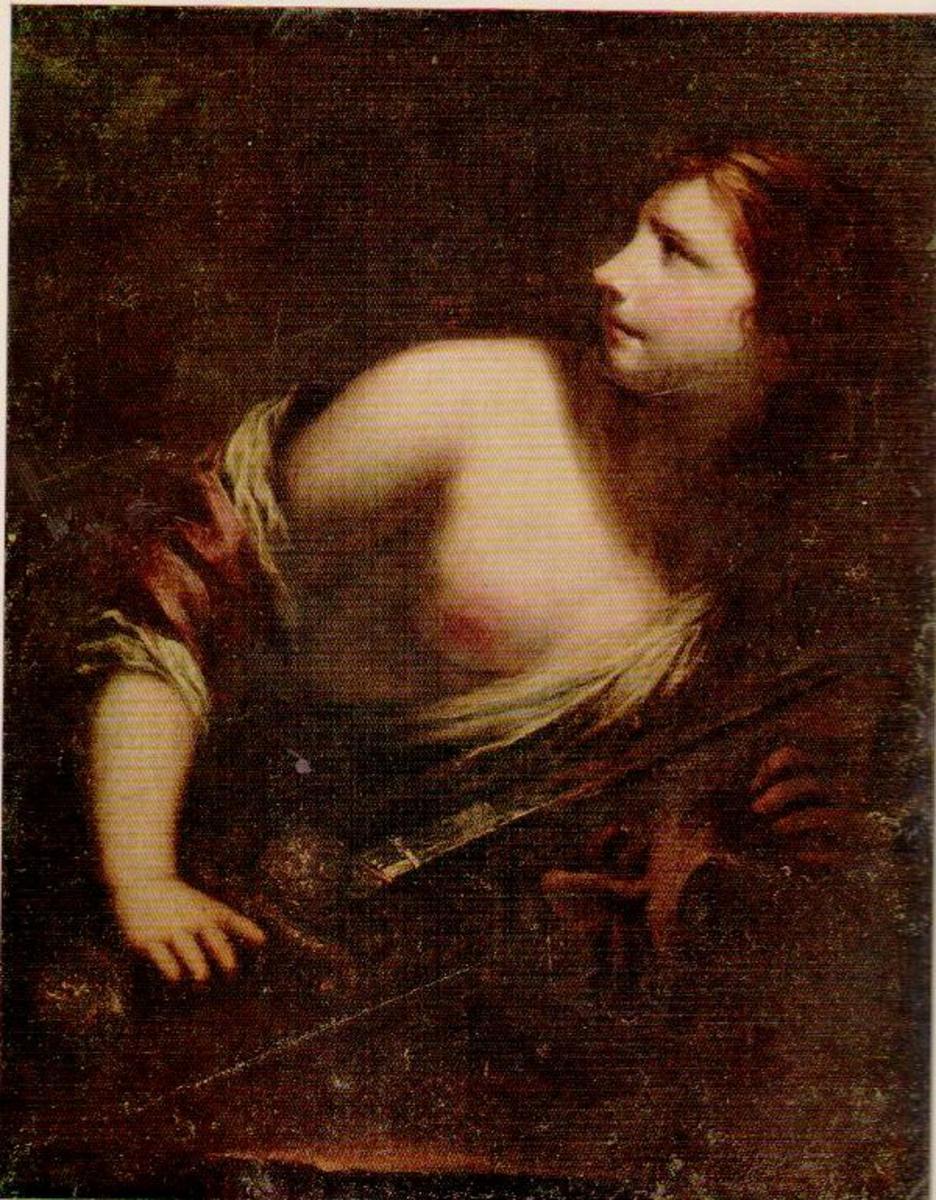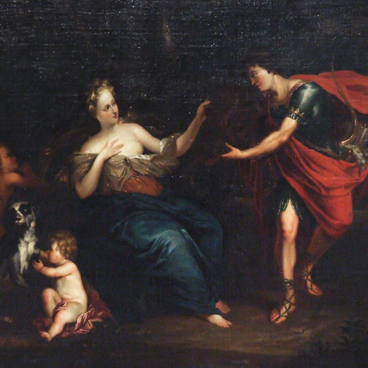This painting was inspired by a legend from the Old Testament. The story has been the subject of numerous works of art. The Assyrian general Holofernes commanded an invincible army that included 120,000 infantry and 12,000 mounted archers. He devastated the Land of Israel wishing to convert the Jews to his religion.
The siege of the mountain fortress of Bethulia lasted for more than a month. On the day when there was not a drop of water left in the city, the young widow Judith, whose name translated as “Jew”, decided to save her people. She put on her best clothes and precious jewelry, took a bath with aromatic oils, and, accompanied by a maid, went to the Assyrian camp.
Judith declared that she was a prophet and promised Holofernes that he would easily capture Bethulia and Jerusalem. Fascinated by the woman’s beauty, the commander allowed her to stay in the camp. A few days after the sumptuous dinner, Holofernes let her into his tent and finally lost vigilance. At night, Judith cut off his head with his own sword and quietly returned to Bethulia. At dawn, the Assyrian warriors discovered their leader’s head on the wall of the besieged city and retreated in fear.
Judith lived for 105 years — she enjoyed great respect and was buried in the Bethulia cave. Like many biblical towns, Bethulia cannot be found on the map: it could be the Palestinian Shechem or the Greek Thermopylae. The Orthodox Church venerates Judith as a righteous woman and a forerunner of the Virgin Mary.
The dramatic, emotional and awe-inspiring plot was typical of the 17th-century Baroque style. The word “barocco” comes from the term “bizarre, excessive.” The Baroque era demonstrated everything most impulsive, intense, pretentious and fantastic. Pignoni portrayed his Judith at a crucial moment — full of anxiety and excitement. The diagonal composition, the angular position of Judith’s head, the sword in her one hand and the severed head in the other — every detail tells us about the drama of feelings and events. The artist also uses contrasts: the light snatches the protagonist out of the darkness, her tender face and wavy hair are opposed to Holofernes’s head that is painted in gloomy shades.
For a long time, the painting “Judith with the Head of Holofernes” from the collection of the Ulyanovsk Regional Art Museum was considered the work of an unknown Italian artist. The painter was identified later as the Florentine master Simone Pignoni, whose works are also housed in the museums of Saint Petersburg, Moscow, Florence, Paris, and Cambridge.
The siege of the mountain fortress of Bethulia lasted for more than a month. On the day when there was not a drop of water left in the city, the young widow Judith, whose name translated as “Jew”, decided to save her people. She put on her best clothes and precious jewelry, took a bath with aromatic oils, and, accompanied by a maid, went to the Assyrian camp.
Judith declared that she was a prophet and promised Holofernes that he would easily capture Bethulia and Jerusalem. Fascinated by the woman’s beauty, the commander allowed her to stay in the camp. A few days after the sumptuous dinner, Holofernes let her into his tent and finally lost vigilance. At night, Judith cut off his head with his own sword and quietly returned to Bethulia. At dawn, the Assyrian warriors discovered their leader’s head on the wall of the besieged city and retreated in fear.
Judith lived for 105 years — she enjoyed great respect and was buried in the Bethulia cave. Like many biblical towns, Bethulia cannot be found on the map: it could be the Palestinian Shechem or the Greek Thermopylae. The Orthodox Church venerates Judith as a righteous woman and a forerunner of the Virgin Mary.
The dramatic, emotional and awe-inspiring plot was typical of the 17th-century Baroque style. The word “barocco” comes from the term “bizarre, excessive.” The Baroque era demonstrated everything most impulsive, intense, pretentious and fantastic. Pignoni portrayed his Judith at a crucial moment — full of anxiety and excitement. The diagonal composition, the angular position of Judith’s head, the sword in her one hand and the severed head in the other — every detail tells us about the drama of feelings and events. The artist also uses contrasts: the light snatches the protagonist out of the darkness, her tender face and wavy hair are opposed to Holofernes’s head that is painted in gloomy shades.
For a long time, the painting “Judith with the Head of Holofernes” from the collection of the Ulyanovsk Regional Art Museum was considered the work of an unknown Italian artist. The painter was identified later as the Florentine master Simone Pignoni, whose works are also housed in the museums of Saint Petersburg, Moscow, Florence, Paris, and Cambridge.



